It’s been a year of unprecedented need, but also unprecedented giving. A report from the Center for Disaster Philanthropy and Candid analysing funding given in response to the Covid-19 pandemic during the first half of the year found that the sum totalled $11.9 billion – a record-breaking amount that far exceeded funding given for all natural disasters over the past several years combined. Since the research concluded, a further $4.6 billion has been pledged for Covid relief bringing the total to $16.5 billion.
Report project managers Tanya Gulliver-Garcia, Director of Learning and Partnerships at the Center for Disaster Philanthropy, and Grace Sato, Research Director at Candid, joined Alliance to break down the record-breaking figure, explore the funding gaps, and explain why philanthropy shouldn’t be a band-aid.
Elika Roohi: Let’s start with the headline figure of your report – in the first half of 2020, $11.9 billion was awarded for Covid-19, a sum that is many times that of the financial response to any other recent disaster. Can you talk about what this amount of money means? What is getting funded?

Tanya Gulliver-Garcia
Tanya Gulliver-Garcia: First of all, it’s great to see this kind of support from philanthropy, and it’s very widespread –it’s corporations, corporate giving programmes, corporate foundations, individuals, philanthropists, high-wealth donors, so a very wide range. And like you said it’s bigger than anything we’ve ever seen before, but at the same time it’s a drop in the bucket of what we know the need is going to be. We’ve never dealt with something like this, at least in recent history, so we’ve never had to think about an immediate crisis on a global scale and how to respond. My fear is that we’re going to get fatigue and get exhausted and not be able to keep up with the need. Philanthropy is trying to fill in all of the gaps that exist, but the gaps are bigger than they can cover up.

Grace Sato
Grace Sato: In terms of what we saw getting funded, at least in the first half of the year, maybe unsurprisingly big portions of funding were going to health-focussed organisations, mainly public health institutions. One of the things that CDP is really interested in is around mental health funding, and so we were able to see that very little of this health-focused funding is going to mental health organisations. And then also, disaster and emergency management organisations, human service organisations, those were the types of organisations that were being funded initially.
You just mentioned this idea of fatigue, where there was a lot of focus on the pandemic at the beginning, but now we’re tired. I know you’re working on second report – are you seeing ‘pandemic fatigue’ reflected in the commitments to Covid funding that are being made now versus six months ago?

Funding for Covid-19 compared to other recent disasters. Infographic: Philanthropy and Covid-19 in the first half of 2020.
TGG: Well, they’re not coming in as fast, and they’re not coming in as big. But they’re still coming in – we just saw a one billion dollar jump a couple of weeks ago with a big donation. But we were seeing that every week or every couple of weeks at the beginning. And the need has not gone away, and if anything has only gotten worse.
GS: Yeah, and the data bares that out. I think right now we’re currently at around $16 billion, and so if we think that $12 billion came in in the first half of the year, it’s dwindling. But to Tanya’s point, they’re still coming in, and what we’re tracking more of now is also the distributions from the Covid-19 funds that were created, so these are smaller grants to local non-profit organisations.
On tracking the distributions, I would be interested to learn a bit more about the methodology that went into collecting the data. One example is Jack Dorsey’s $1 billion commitment. It’s in the tallies as $1 billion toward Covid, but he’s dispersed maybe over a quarter of it and has also said that when the pandemic’s over, whatever is left will go to girls’ education and universal basic income. Do you think that in the aggregate figure there’s over-accounting of the commitments based on the headline pledges rather than the actual spending?
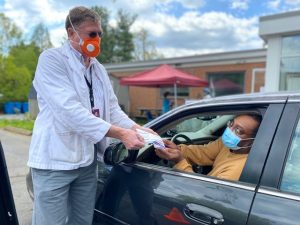
Bradley Free Clinic conducts a drive-thru for medication access during the coronavirus pandemic. Photo: National Association of Free and Charitable Clinics.
GS: So you’re right, we are tracking both the initial commitments and pledges that are made, but also we’re trying to track the disbursements as we know about them. Jack Dorsey is a little unique in that he’s actually telling us what he’s doing; he’s made a commitment to transparency, and that’s not always information that we have. For our Covid report, even though he made an initial $1 billion pledge for Covid, we counted only his Covid-related disbursements from Smart Small LLC in the overall total. When we do have this information, we’re able to actually account for that in the analysis and not over-account the commitment. But not everyone may share this level of detail. If a funder makes a large pledge and later changes their mind about where that funding will go, unless they share that information, we may not know.
I would love to see philanthropy be able to move more into justice work, organising work, advocacy, and really building communities up, as opposed to having to fill in these gaps that exist. The government needs to step up at these core root issues.
TGG: I would say at the same time, there’s a few areas where we might have undercounting, one of which is that we’re highly dependent on English language media. So if announcements had been made and not translated, we might not have come across them – especially for in-country donations that didn’t get national media, or international media, then we might not have seen those. And then what we didn’t really count or that we allude to in this report is individual giving. The cut-off for high-wealth donors was $50,000, so if you gave $50 every month to your food bank or you gave $500 or you gave $25,000, your donation wouldn’t have necessarily been counted. We can extrapolate that based on what we know people spent on disasters in 2017 and 2018, which works out on an annual basis somewhere around $3 billion in just US household giving. But that also doesn’t capture all the individual giving in all the other countries around the world. And so that number is definitely missing. And you know, $3 billion was all of the disasters in 2017 or all of the disasters in 2018, but if so much money went to Covid from philanthropy, it’s possible that that same amount of money went to Covid giving individually. People might have really amped it up! If we do a survey for 2020, we might see that it was $4 billion or $5 billion, but definitely it’s higher just because we only base that on the US, so all of the givers in England, all of the givers in France, in Italy, that’s going to be billions more probably.
The research also highlighted a lot of gaps in the funding, and one thing that stood out to me was despite these rousing pledges by funding to be flexible this year, very little of what you analysed was core funding. I was wondering if you had any thoughts on that discrepancy?
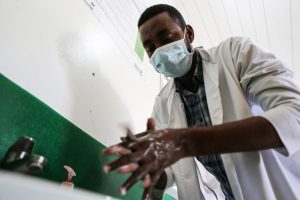
A nurse at Waaberi health center uses one of the in-house handwashing stations. Photo courtesy of Action Against Hunger.
GS: I’m a little hesitant to extrapolate too much from the data, just because methodologically, we don’t make any assumptions that a grant or an award is for a core support unless the funder explicitly tells us that. And so the little funding could be that we just didn’t get enough information, we didn’t have enough robust grant description to actually code them as general support. Because of that ambiguity I’m a little hesitant to say that funders are not living up to their commitment to flexibility, especially too because a more recent survey came out from the Council on Foundations, and found that 85 per cent of the funders they interviewed are adopting flexible grant making practices, so qualitatively it seems to indicate that that particular practice is changing, even if we’re not necessarily seeing it in the data.
TGG: And you know, we had active grants for a Hurricane Harvey Fund and they were allowed to switch and reconfigure a bit or delay what they were doing so that they could focus on other Covid work, and so I think there’s a lot of that that doesn’t get captured. Talking to grant makers, I’m very aware of a number who have just said to their current grantees: ‘Use our money however you want to use it.’ But that can’t get captured in our report because it’s not new money, it’s money that was already given out and distributed and assigned.
We’ve always talked about the importance of community foundations, but a lot of people just want to give to those big names that get the attention in the news. The community foundations are on the ground – they’re meeting with the people and they know the people, and they’re meeting community needs hopefully before things get really out of control.
GS: Yes, and to the point of not having enough information, 85 per cent of the transactions that we analysed went to these unknown recipients or multiple recipients, so we’re working with a lot of data that just doesn’t give us very much to go on.
Another gap highlighted by your analysis was proportionally very little of the Covid funding was specifically designated for communities of colour. I was wondering if you could explore that with me?
TGG: I think it’s a couple of things, and Grace can maybe pull the actual stat which I think is five per cent. I think one is timing. When we started to see, at least in the US, very explicit funding for communities of colour was towards the end of the study period. So even though there were these protests around the country, the timing of when a grant would come out would be a few months later just because it takes a while for folks to do the grant. As well as a lot of the money that was going to communities of colour was being designated for bail funds, legal work, justice organising, protests. Even though there might be Covid activities – I know in New Orleans there was hygiene stations available, and there was canned food you could pick up and take home if you were at a protest – none of that would actually be designated as funding for Covid for communities of colour, it would just be designated as support for the protest itself.
GS: And we’re also looking at huge multi-million-dollar funding for vaccines and treatment, so it could just have been that these huge grants sort of dwarf the support for black and brown communities. It’ll be interesting to look at what we’re seeing coming in more recently. You had a question about funding around racial equity and Covid, and I think more recently we definitely are seeing more of that.

A mobile shower at the Symba Center. Photo: National Association of Free & Charitable Clinics.
What else has been happening with Covid funding? I’d be interested to hear your insights on innovations on the ground.
GS: I think Covid is really moving skill development, and that there is a lot of work happening on the ground. I was listening to someone working in Africa who was saying ‘Look, we can’t wait for money to go through four channels to finally get to us, and so we have mobilised ourselves, we are raising money from the ground or communities or helping one-another out. We are making it work because we’re not going to be dependent on this external funding that may or may not come to us.’ I think people working on the ground are doing the work, whether or not they’re getting externally supported or not.
Talking to grant makers, I’m very aware of a number who have just said to their current grantees: ‘Use our money however you want to use it.’
TGG: I’ve seen that happen domestically as well that uprising in mutual aid organisations, which are a traditional way of doing work. And it seems like working better for people to ask for what they need than for you to volunteer, because they know their needs better than you do. That speaks to the idea of localisation. You know, I can go in as an international funder to Ghana and say: ‘Well I think you should do this’, but that might not have anything to do with what people in Ghana actually want. It’s so much better for them to say: ‘I need this, and this is what you can fund.’
On this question on effective action and effective funding, I’m wondering if funding has changed as we’ve learned more about Covid? Back in March, we didn’t understand that Covid was spread through respiratory transmission, we weren’t wearing masks, we were quarantining our mail. Now of course we know a lot more – we’ve made massive discoveries when it comes to medication and also vaccine research. Do you think our knowledge of the virus has influenced our funding?
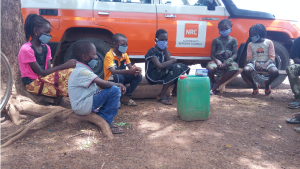
A group of primary school children from Kongoussi, a town in the Centre North Region of Burkina Faso, gather around a small radio as they listen to a lesson on French spelling. Photo by Adama Kouraogo, courtesy of Norwegian Refugee Council Burkina.
GS: I’m not seeing a huge difference. I mean we’re still seeing PPE funding; we’re seeing supporting non-profits to do their work remotely. And the Gates Foundation is continuing to direct a lot of funding to research and vaccines, maybe now more around global access and making sure lower-income countries have access to the vaccines once they’re available. So yeah, it’s seeming to be not too different.
TGG: I agree. I think our hope at the beginning when we saw this health money come in was that it was a stopgap until government could build up supplies and start providing it. I don’t know if it’s the level of demand, if it’s politics, or what’s causing it, but that hasn’t happened. Things are a little better now – so you might get two masks a day instead of one if you’re a healthcare worker dealing with a Covid patient, but the health system is still re-using equipment that they shouldn’t be re-using. We didn’t ever control spread in the US, and so the demand for all of those items that there was at the beginning is still as strong, if not stronger now.
With both of your experience looking at this data, what have been some of the more effective giving trends that you’ve noticed?
TGG: It’s the support of community foundations. I talk with community foundations in the Midwest every couple of weeks, and to hear what they’re doing and how they’re spending their money, it’s just so local and so critical. We’ve always talked about the importance of community foundations, but a lot of people just want to give to those big names that get the attention in the news. The community foundations are on the ground – they’re meeting with the people and they know the people, and they’re meeting community needs hopefully before things get really out of control. For example, in Canada, some indigenous groups got together and planned their own response to Covid, and they haven’t been hit anywhere near as hard as indigenous groups in the US because they did their own public health modelling and got their own financing and support to do that.
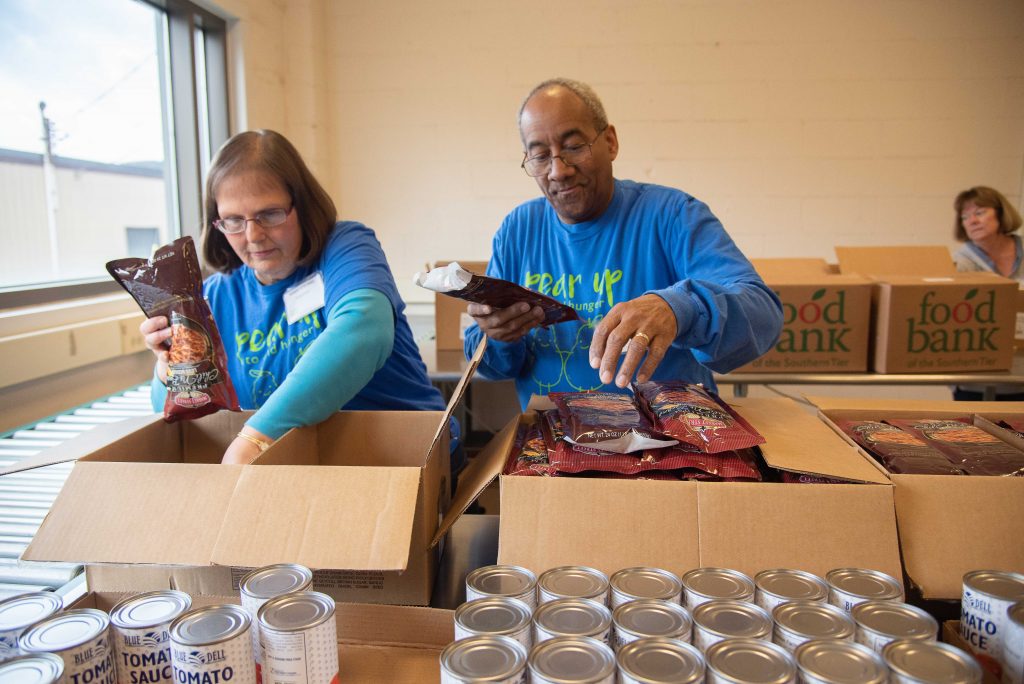
Volunteers at Food Bank of the Southern Tier in Upstate New York packing emergency food boxes and bagging produce for drop and go delivery at Mobile Food Pantry sites and for distribution through regional school districts. Photo: Feeding America and the Food Bank of the Southern Tier.
My last question is about the future. For shoring ourselves up against the next disaster, whatever it is, what are things you want to see more of when it comes to disaster funding practice?
TGG: It’s government funding honestly. We just released our Measuring the State of Disaster Philanthropy report for 2018 looking at disasters that happened in 2018, and you can see huge amounts of government funding. And then you look at philanthropy, and it’s just a fraction of that government money. I think if we did a comparison with the CARES Act and all of the government support, it would be nothing compared to the $16 billion that philanthropy has given. I think we can’t do it alone, and I would love to see philanthropy be able to move more into justice work, organising work, advocacy, and really building communities up, as opposed to having to fill in these gaps that exist. The government needs to step up at these core root issues that are causing discrepancies, and that will allow philanthropy to do great, innovative, creative funding, as opposed to band-aids on feeding programs that exist because people are starving.
GS: The Covid funding and outpouring of support this year has great, but the issues and the problems are going to continue. My hope for the future is that there’s a commitment to addressing how we as a global society deal with these continuing disasters.
Elika Roohi is Digital Editor at Alliance magazine
For more on philanthropy’s response to Covid-19, check out Alliance magazine’s December issue on global health philanthropy.



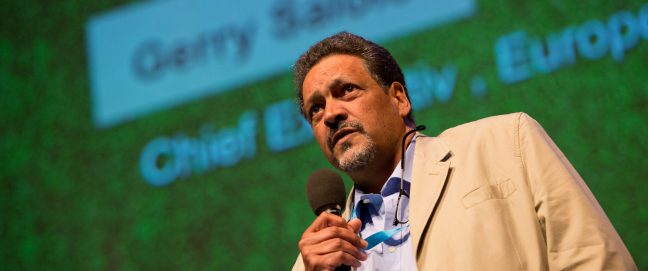

Comments (0)